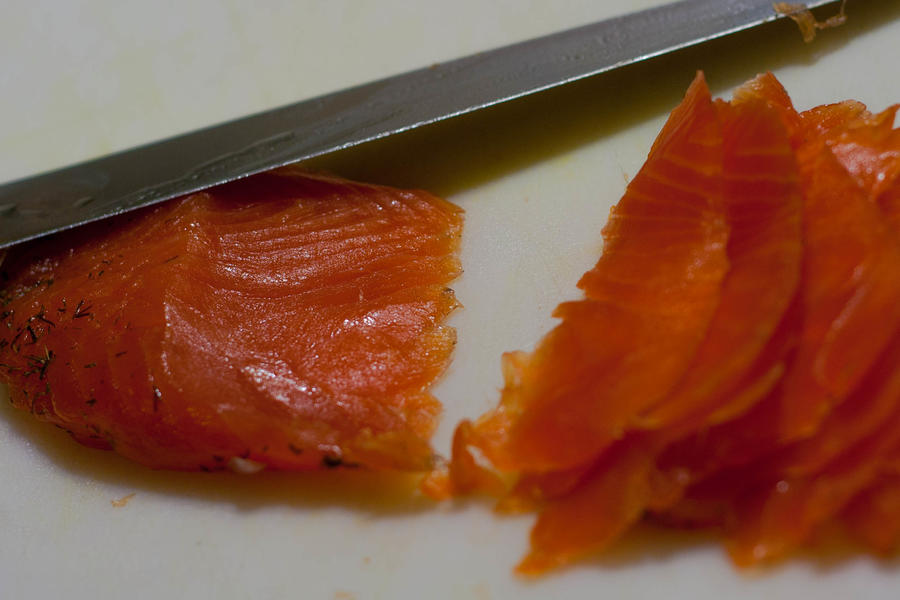md, First I will address the cure didn't penetrate the thicker portions of the meat.... More cure will not speed up the process and penetrate thicker cuts of meat... Only time will allow for additional penetration of those thicker cuts....
The amount of cure.... Salmon, If I remember correctly, 200 ppm nitrite is max. allowable for commercial processing... in smoked fish....
So 1 tsp. would be OK for 4 #'s of salmon ... approx. 195 Ppm... Then the additional 1/2 tsp. would bring 4#'s fish to ~ 290 Ppm.... All of the above assumes you used 1 tsp. cure #1 in the initial mix for ~4#'s salmon..... Then there is the rinse, which removed a fair portion of the cure due to the short time it was cured, and the cure probably was mostly near the surface of the meat.....
Then we have the fact that no one is going to eat more than about 2-3 ounces of the Lox.... I'm gonna say it will be fine....
Below is the toxicity of pure sodium nitrite.... not cure #1... Cure #1 takes about 16 times more to kill you than the pure stuff...
So.. 71 mg/kg is now 1136 mg cure #1/kg of body weight... 1.1 gram cure #1 per 2.2 #'s body weight .... Or so the experts say... I don't think they have tested just exactly how much it takes to kill you...
1.5 tsp. of cure #1 is about 8.5 grams.... You would have to weigh about 20#'s for 1.5 tsp. to be lethal.... Extending that thought, 1 tsp. will kill an infant.... So it don't take much... By the way, nitrites are not allowed in infant food.... FWIW.....
Anyway, as you can see from the numbers, the Lox should be safe in small amounts ..... there may be some reaction... some folks may react to nitrites..
This extended dissertation is intended for you to follow my logic and for others to learn from..... Hope I wasn't too BORING ...:biggrin:
Nitrites can be deadly .... given the Ld (LO)...
WikiPedia
While this chemical will prevent the growth of bacteria, it can be toxic in high amounts for animals, including humans. Sodium nitrite's LD50 in rats is 180 mg/kg and its human LDLo is 71 mg/kg, meaning a 65 kg person would likely have to consume at least 4.615 g to result in death.[15] To prevent toxicity, sodium nitrite (blended with salt) sold as a food additive is dyed bright pink to avoid mistaking it for plain salt or sugar. Nitrites are a normal part of human diet, found in most vegetables.[16][17][18] Nitrite levels in 34 vegetable samples, including different varieties of cabbage, lettuce, spinach, parsley and turnips ranged between 1.1 and 57 mg/kg, e.g. white cauliflower (3.49 mg/kg) and green cauliflower (1.47 mg/kg).[16][19] Boiling vegetables lowers nitrate but not nitrite.[16] Fresh meat contains 0.4-0.5 mg/kg nitrite and 4–7 mg/kg of nitrate (10–30 mg/kg nitrate in cured meats).[18] The presence of nitrite in animal tissue is a consequence of metabolism of nitric oxide, an important neurotransmitter.[20] Nitric oxide can be created de novo from nitric oxide synthase utilizing arginine or from ingested nitrate or nitrite.[21] Most research on the negative effects of nitrites on humans predates the discovery of nitric oxide's importance to human metabolism and human endogenous metabolism of nitrite.[citation needed]








